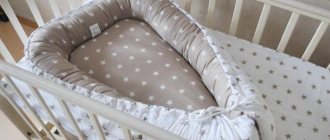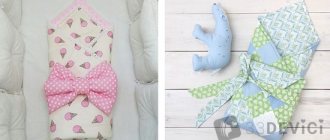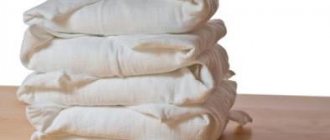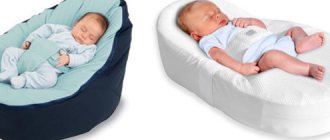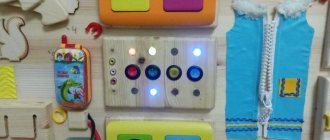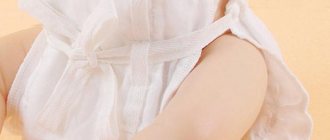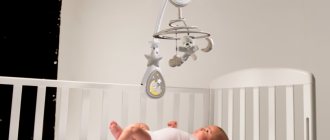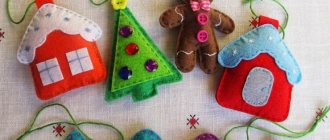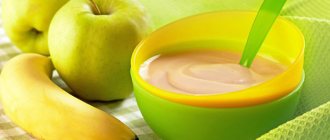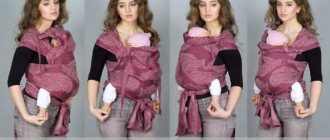A picture with a cozy nest for toddlers caught my eye. So I set myself a goal: to sew a cocoon - a nest for a baby with my own hands. Although, to be honest, I really dreamed of an ergonomic Coconobaby mattress, which is not cheap, even on Avito. I looked at the pictures of the nests and decided that I could definitely do such and such a thing, and it would cost much less.
Looking ahead, I will say that the little thing turned out to be in great demand, it fit perfectly into the stroller and the cradle, and the baby actually slept more soundly in it, since the “tender embrace” of the nest allowed my “chick” to sleep much more soundly, because he felt like in mom's tummy.
Nest for a baby: pattern - diagram
Below you will find a pattern that needs to be transferred to your fabric. All dimensions are given in cm, so everything will be easy to reproduce. The nest pattern is given taking into account seam allowances
How to sew a nest with your own hands: step-by-step master class
To sew a nest we will need:
- 2 pieces of fabric (100*60cm), if cut from two different pieces; or one piece (1m with a fabric width of 1.5m),
- padding polyester (preferably pieces),
- bias binding (about 2.8 m),
- ribbon or cord for tying (3 - 3.2 m),
- YOUR DESIRE (nowhere without it...).
So, let's start sewing the nest.
- We cut out the top and bottom parts. I used two meter-long diapers, in which it was already difficult to swaddle the baby.
- We sew lace to the bottom part (face to face), placing it in even folds.
- We sew down the parts of the top and bottom according to the marks in the middle of the eyelet; we do not sew up the bottom in order to turn it inside out and stuff the socket.
- Turn the socket right side out and apply bias tape to thread the cord through.
- We draw off the inner contour of the mattress, thereby separating the bottom and sides.
- We stuff the mattress and sides with padding polyester. It is better to take pieces or trimmings of padding polyester - this will make the mattress more airy. If desired, the bottom can be quilted in any way acceptable to you, so the pieces of padding polyester will not bunch up.
- Insert the cord to tighten the mattress.
- Sew up the holes for stuffing along the edges of the cuts.
- Finish loose edges with bias tape.
- We tighten the cord or braid so that the mattress forms a nest.
Here's a cocoon - you can make a nest with your own hands. For inspiration, I offer a few more options.
Get creative, play with finishes and materials and you will end up with a great nest.
And also, as a bonus, I suggest sewing a pillow for the cocoon and a bagel for the legs.
Cozy nests
When born, the baby experiences discomfort, because the mother’s belly was warm and safe. He felt that he was protected from all sides. In life, a mother cannot be nearby every minute; a nest for newborns will provide a feeling of comfort during sleep.
It is an anatomically shaped mattress. It follows the curves of the baby's body and has sides on all sides, so that the baby cannot fall out. Such mattresses were first invented by French doctors, but studies have shown that their use will also be beneficial for full-term babies.
What are the advantages of such a device:
- The child feels comfortable and calm;
- Children's sleep becomes stronger;
- The anatomical shape contributes to the correct formation of the spine;
- Reduces muscle hypertonicity;
- There is no risk of sudden respiratory arrest due to suffocation (SIDS);
- Reduces the incidence of colic;
- The risk of developing cranial pathologies is reduced.
The cocoon reminds the baby of being in the arms of his mother or in her womb. It makes it convenient to feed your baby. As for the disadvantages, they include:
- Cost – such products are more expensive than regular mattresses. The average price is 10 thousand rubles.
- Short lifespan – the nest lasts for about 2-3 months, until the baby starts to roll over.
- Some mothers note that the baby may feel hot in the cocoon.
An envelope or diaper - a cocoon for newborns - can partially take on all of the listed functions.
DIY baby pillow
I once bought such a pillow for my eldest son, I really liked it, so now I suggest you sew the same one.
The pillow pattern can be downloaded below. Just print it on your printer and that's it.
Baby pillow kX8OpIy135XqAx.html
22.0 KiB 177 Downloads Details
| Author: | TG |
| Category: | Patterns |
| Date of: | 28.12.2016 |
- We cut out two parts of the pad and grind them in a circle, from notch to notch. Next, we draw out the inner circle - this is the place for the head.
- We stuff it with padding polyester, but not tightly, otherwise the pillow will be high and hard. Remember that babies are advised to put a diaper under their head and nothing more, based on this, fill the pillow so that there is minimal lift under the neck.
- Sew up the hole and edge the edges with bias tape.
That's it, the baby pillow is ready. In stores, such pads are called orthopedic, they say they support the head in the correct position. So, we just made an orthopedic pillow for the baby. Wow!
Sew a cocoon-nest for newborns: ideas and instructions
All mothers have a lot of things to do, which they cannot always complete on time with a newborn baby. Leaving a baby alone in his crib is dangerous, and, for example, in the kitchen it is unlikely that you will be able to safely accommodate your baby. In this case, an excellent solution would be a nest for newborns, in which you can place the baby and move him around the house with you. The baby will always be under supervision, and you can calmly go about your business. Unfortunately, the offers on the modern market do not always meet the numerous requirements of responsible mothers: too high prices, poor colors, inappropriate shapes and other nuances make them think about sewing this necessary item themselves.
Cocoon-nest for a newborn: what is it and why is it needed?
A cocoon-nest is a bed that ideally fits the child’s size and follows his anatomical shape; it is a mattress with rounded sides, sometimes supplemented with an orthopedic pillow. Intended for babies from birth to 4 months.
Initially, the cocoon-nest was intended for premature babies, but gradually, having understood all its advantages, they began to be used for ordinary babies
Important! Do not leave the baby in the cocoon unattended, do not place the cocoon on surfaces from which the baby could even theoretically fall (dresser of drawers, changing table, edge of the bed or sofa, etc.).
A cocoon for a newborn has a number of advantages:
- creates a cozy space in which the child is more comfortable adapting to the “big world” (the special design of the cocoon is designed in such a way that the child, lying in it, feels as close as possible to the position in the mother’s womb), thanks to this, sleep in the nest is always calmer and longer , and the period of wakefulness increases significantly;
- The cocoon with the baby can be carried and placed anywhere, so a busy mother can take it with her without worry or remorse and do all the necessary things or just relax;
- if you put a newborn in a nest, you can sleep peacefully with him, without fear of crushing the baby or hurting him;
- if a child does not sleep well in a crib/stroller, etc., then the cocoon will fix this problem: due to its small size, it can be placed anywhere (in a stroller, crib, on a changing table, etc.);
- It’s convenient to lull the baby into a nest, rocking him slightly, and then you can move him to the right place without interrupting the child’s light sleep;
- thanks to its anatomical shape, the cocoon helps the development of the baby’s correct skeleton and also reduces muscle tone;
- The cocoon helps the child cope with intestinal colic.
The baby in the cocoon feels more confident, as it is in a slightly grouped position, repeating the intrauterine one, in which the shoulders and spine take on a slightly rounded shape. This saves the child from regurgitation, gas formation and colic.
Tatyana Butskaya, pediatrician
Tips for choosing materials for making a cocoon-nest
The requirements for materials for children's textiles, including cocoon nests, are very high. Despite their small number, very few types of fabrics and fillers can boast even such a set. Materials for the nest cocoon should be:
- hypoallergenic;
- breathable;
- high quality;
- preferably natural.
Note! You should only purchase materials in trusted, well-established stores, since only in such retail outlets can you be sure of the proper quality of the product and that the labels contain reliable information about the composition of the materials.
Main material
The main material for the nest cocoon can be selected from the following fabrics:
- chintz,
- flannel,
- knitwear,
- muslin,
- fleece,
- calico,
- bike.
Fabrics for making a cocoon-nest must be natural.
All these fabrics are perfect as the main material for a cocoon-nest. However, if you plan to leave the product for your next child or give it to someone after the expiration date, you should choose denser options from those proposed in the list in order to extend the life of the cocoon.
Advice! Try not to choose fabrics that are too bright and saturated colors, so as not to overstimulate your baby’s nervous system.
Filler
Conventionally, all fillers can be divided into 4 types. According to their form they are divided into:
- crumbly (they are suitable for filling the sides),
- roll/sheet (ideal for a cocoon-nest mattress).
By origin, fillers can be:
Since both crumbly and rolled fillers can be natural and synthetic, let’s take a closer look at which types belong to which categories.
Loose fillers
Friable and natural fillers include:
- feather,
- bamboo fiber,
- silk,
- wool (sheep, camel or llama),
- cotton wool.
Note! Warm fillings should be chosen only if you are sewing a cocoon-nest for the cold season.
Loose synthetic fillers are:
- holofiber,
- synthetic fluff,
- polyester microfiber.
Roll fillers
Rolled fillers of natural origin can be as follows:
- latex,
- memory foam,
- coconut coir,
- linen,
- sisal.
Coconut coir is a filler with ideal performance properties.
Artificial roll fillers:
Today, holofiber is considered optimal, since it does not have a “heat gun” effect and does not cause allergies.
Fittings and decorative elements
As for the fittings and decorative elements for the cocoon-nest, they should be:
- without sharp corners;
- without long threads and fringes so that the child does not get entangled in them;
- from medium to large size, so that they do not get into the child’s nasopharynx;
- securely attached to the main product.
